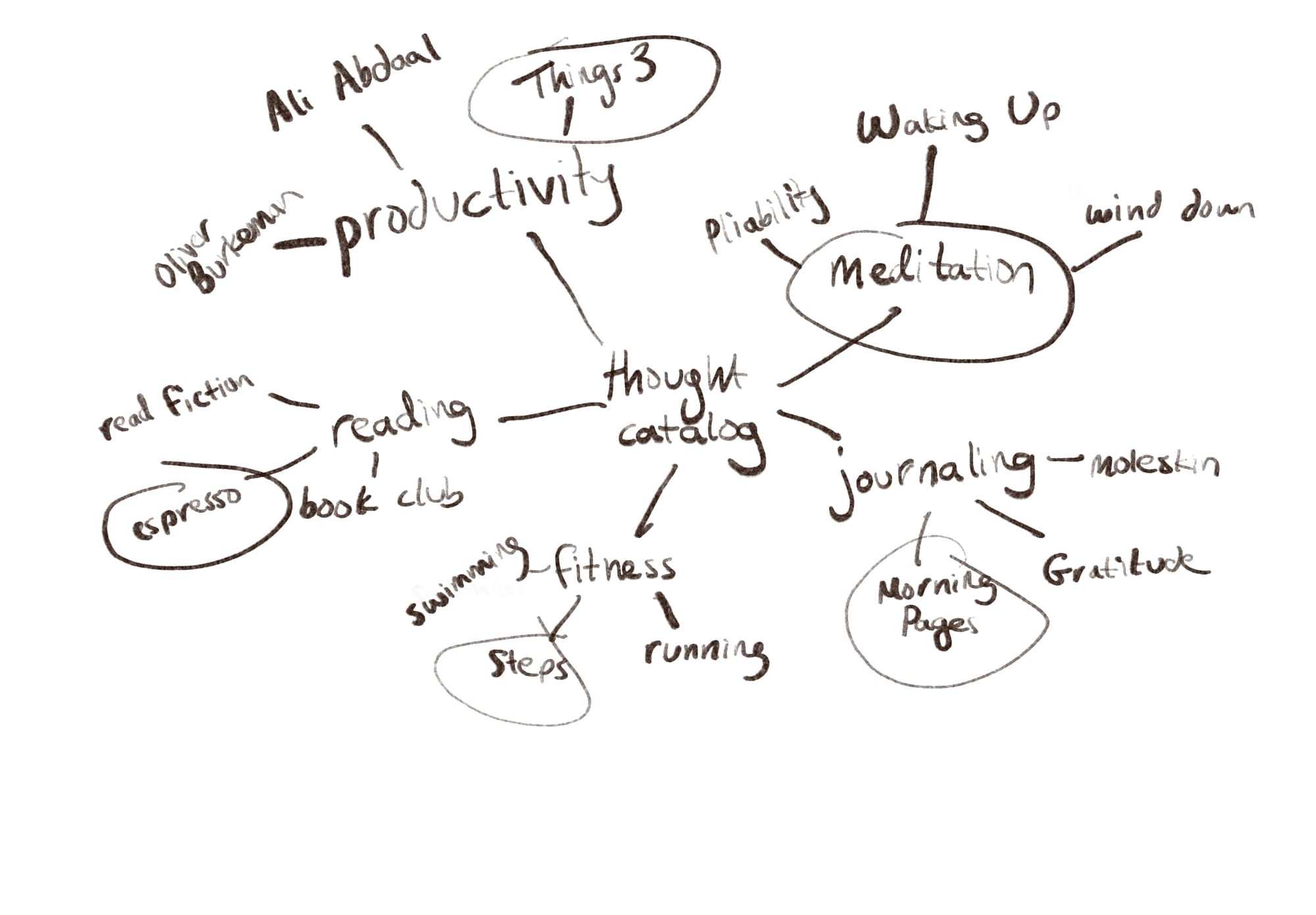The Act of Brainstorming
I could technically say that I have "brainstormed" before as part of some group assignment in high school or college. I didn't ever really consider it a tactile practice, though. This week, I explore a brainstorming exercise to help generate more actionable ideas.

Weeks ago, I wrote about Lifeviews and Workviews, inspired by the book Designing Your Life by Bill Burnett and Dave Evans. Defining those views was one of the first exercises they recommended completing. Another exercise they suggest is brainstorming.
Now, if you’re like me, brainstorming has always been this kind of superfluous thing. Sure, I’ve been a part of group projects in high school or college where brainstorming was involved. Normally, it meant spit-balling a little bit before quickly settling on a direction. There wasn’t really a formal practice to this method as far as I was aware, and I definitely haven’t thought about it much since college.
Maybe I should reconsider that stance.
Mind Mapping to Generate Ideas
In Designing Your Life, Burnett and Evans describe the art of brainstorming as they teach it in their class at Stanford. Brainstorming can be a tangible and tactile practice. Since I was looking for ideas for this blog, I decided to give their practice a try.
Brainstorming is more like a genre of activities as described by the authors. A specific activity they define is mind mapping. The authors mention this tool as a great way to get unstuck (in fact, this idea comes from Chapter 4 of the book which is called “Getting Unstuck”). The only thing you need is a pen and paper.

Picking a Central Word
To start, you pick a topic. Since the book is primarily about finding a job you enjoy, they ask that you put something you like doing at the center. For me and the blog, I’m going to put a topic that interests me at the center: the Thought Catalog.
The First Ring of Words
Next, you begin to brainstorm words based off your original idea. Write down five or six things that you think of when you think of the topic. These words don’t have to be directly related; it’s just whatever comes to mind. Burnett and Evans emphasize how important it is to let your mind explore during this exercise.
Some words that I have stemming from the center are meditation, journaling and fitness.
The Second Ring of Words
Once you have these five-to-six words, do the same exercise branching off these new words.
From meditation for example, I thought of Waking Up (a meditation app), a wind down breathing technique, and Pliability (a stretching app). Some of those make more sense than others. I’ll let you check the image above for the other rings. I think it would be quite boring for me to describe each one in turn.
Choosing What Stands Out
Now that I have a sheet full of words, it’s time for the last step: reviewing what stands out to me. Looking at my completed mind map, I circled the following words: Things 3, espresso, meditation, step count, and Morning Pages. These are all topics about which I’d be interested in writing.
And just like that, I have five new ideas to blog about, which could potentially lead to five more weeks of material.
Rinse and Repeat
This process is infinitely repeatable. Maybe next time, I do it with basketball at the center or something entirely different.
Whether you use this to come up with ideas for a job or what food to have for dinner, the mind map is an excellent way to put pen to paper and brainstorm some ideas you might want to action.
Let me know how it goes if you try it out for yourself!
If you found this post interesting, please consider subscribing so that the next post gets delivered straight to your inbox!
